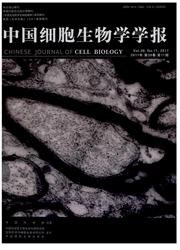

 中文摘要:
中文摘要:
本研究通过比较体外转录和单引物扩增这两种扩增微量RNA的不同方法,以寻找一种高效的扩增方法。我们用两种不同方法分别扩增小鼠大脑全皮层及第五皮层细胞的RNA,扩增的RNA,合成cDNA后进行荧光定量PCR实验,根据PCR结果比较两种不同扩增方法的效率。WTovation扩增RNA的效率约为IVT效率的2.8倍;IVT方法扩增后,基因D—Ct值与引物距离mRNA3’端的长度及mRNA的长度均存在正线性相关(P〈0.05),即引物距离mRNA的3’端越近、mRNA越短,基因D-Ct值越低。而WT-ovation方法扩增后,基因D—C值与引物距离mRNA3’端的长度及mRNA的长度均不存在统计学相关性。与IVT方法相比,WT-ovation方法效率更高,扩增时受影响因素较少、更稳定。
 英文摘要:
英文摘要:
Two RNA amplification methods of in vitro transcription (IVT) and single primer amplification (WT-ovation) were compared to find a more efficient method for amplification of small amounts of total RNA. RNA was extracted from mouse cerebral cortex tissue or the layer V of cortical cortex, and then was amplified separately with the two different methods. After cDNA was reverse transcripted from the amplified RNA, real-time quantitative PCR was performed. The efficiency of RNA amplification was determined according to the results of real-time PCR. Our results indicated that WT-ovation amplification was about 2.8 times more efficient than IVT amplification. The value of D-Ct was positively correlated with both the primer length from the 3' terminus of mRNA(P〈0.05) and mRNA length(P〈0.05) after IVT amplification. The nearer distance between primer and the 3' terminus of mRNA and the shorter mRNA could result in lower value of D-Ct. But there was no significant correlation between the value of D-Ct and the primer position or mRNA length when the amplification method of WT- ovation was performed. Compared with IVT, WT-ovation was a more stable method which was more efficient and less affected by amplification factors.
 同期刊论文项目
同期刊论文项目
 同项目期刊论文
同项目期刊论文
 期刊信息
期刊信息
